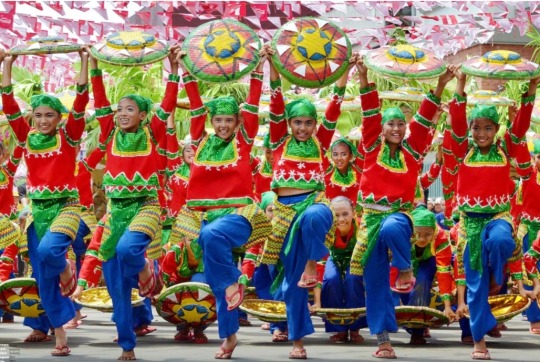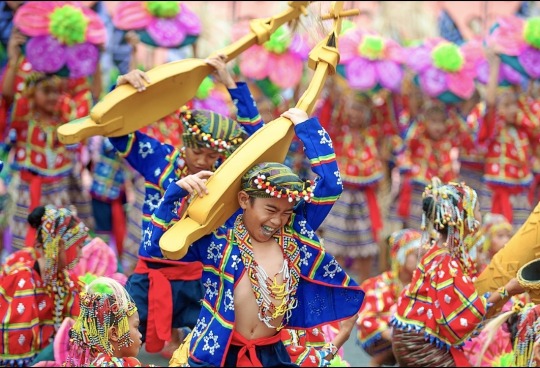Text


Kadayawan Festival
Kadayawan is a native expression in the Dabawnon tongue. It’s derived from the word “madayaw” which means good, valuable, and superior. Hence, Kadayawan Festival Tagalog means pasasalamat at pagpapahalaga. It is the celebration of life, a thanksgiving for the gifts of nature, the wealth of culture, and bounties of harvest and serenity of living.
While it’s celebrated without the religious factor, the origin of Kadayawan Festival is the pagan belief of the ethnic tribes of Davao. Back in the day, the ethnic tribes would come together at the foot of Mt. Apo, the Philippines’ highest mountain, to celebrate abundant crops, performing rituals that paid tribute to the nature gods Manama and Bulan.
As a sign of respect for the great year they’ve had, they displayed fruits, vegetables, flowers, rice, and corn grains on their mats and at the front of their houses. They also used to sing and dance as well, much like what they do today.
In the 1970s, then-Mayor Elias B. Lopez, encouraged the Davao ethnic tribes to showcase their thanksgiving rituals. In 1986, the Davao City government launched a project that aimed to unite the people during the turbulent times of the Martial Law.
That time, the festival was called Apo Duwaling, named after three natural wonders you can find the region: Mt. Apo, Durian, and Waling-waling. It was officially renamed as the Kadayawan Festival in 1988 by then-Mayor Rodrigo Duterte.
Once a small gathering, Kadayawan Festival in Davao is now one of the highly-anticipated festivals in the Philippines. From the dynamic street dancing to the vibrant giant floral parade, Kadayawan has something for everyone!
Held every third week of August, Dabaweños celebrate Kadayawan Festival as a thanksgiving event and a tribute to the lumad, a collective group of indigenous people living in the city. This is what makes Kadayawan a unique festival.
2 notes
·
View notes